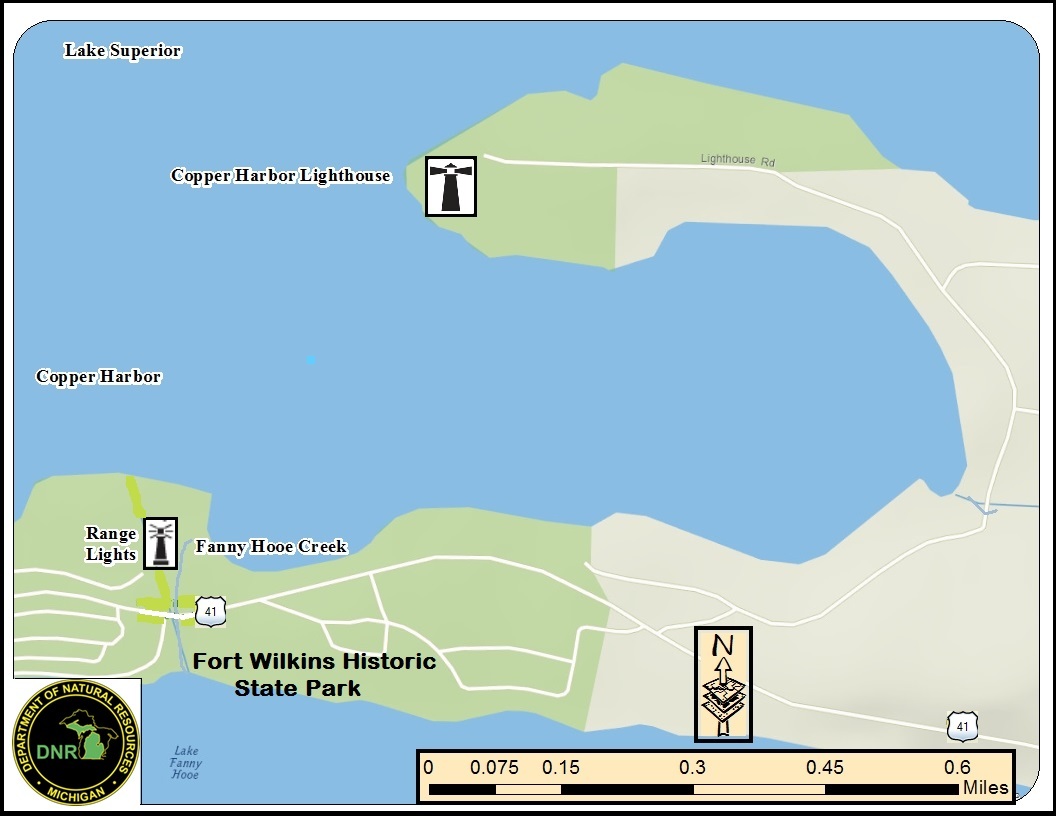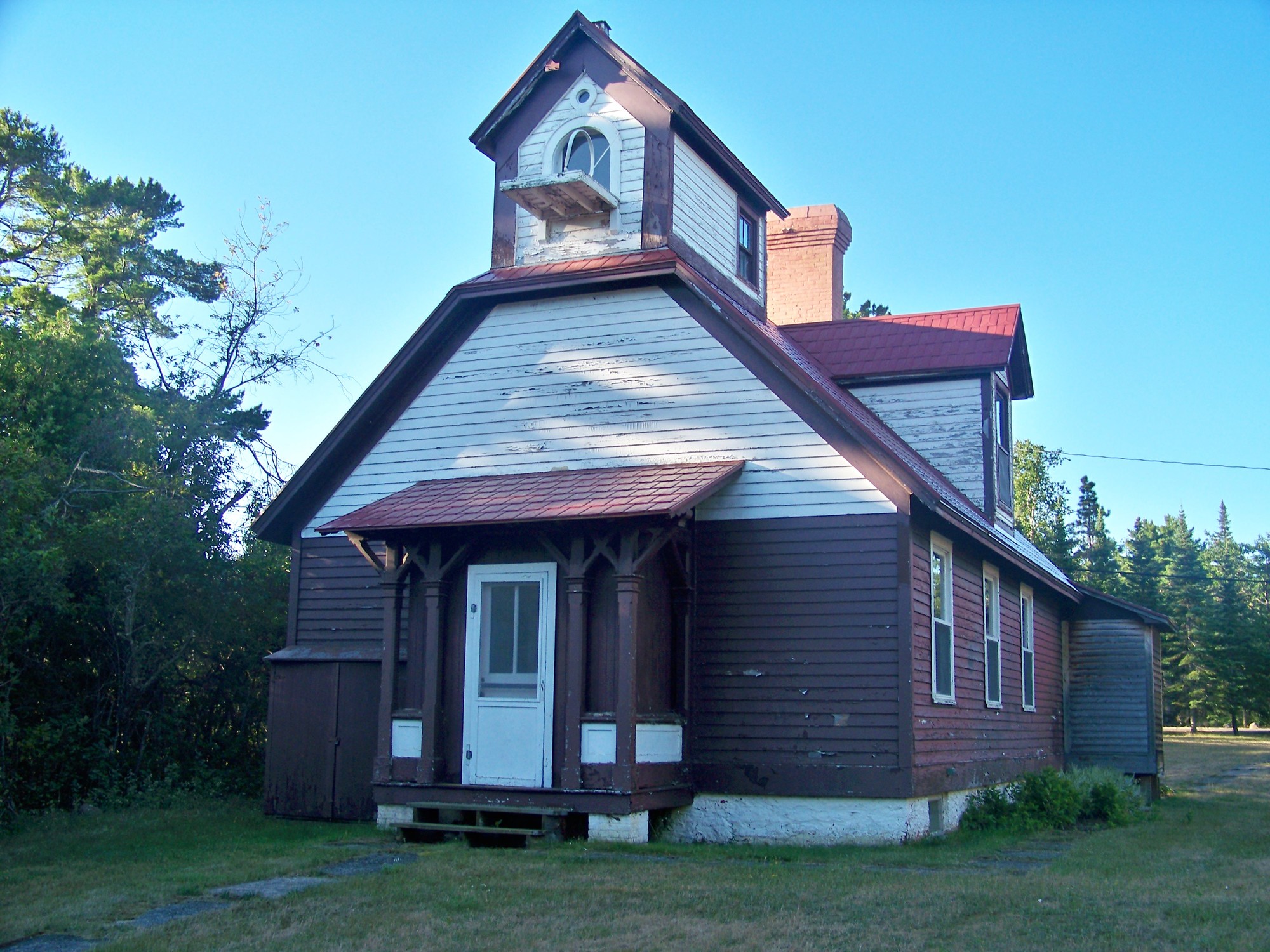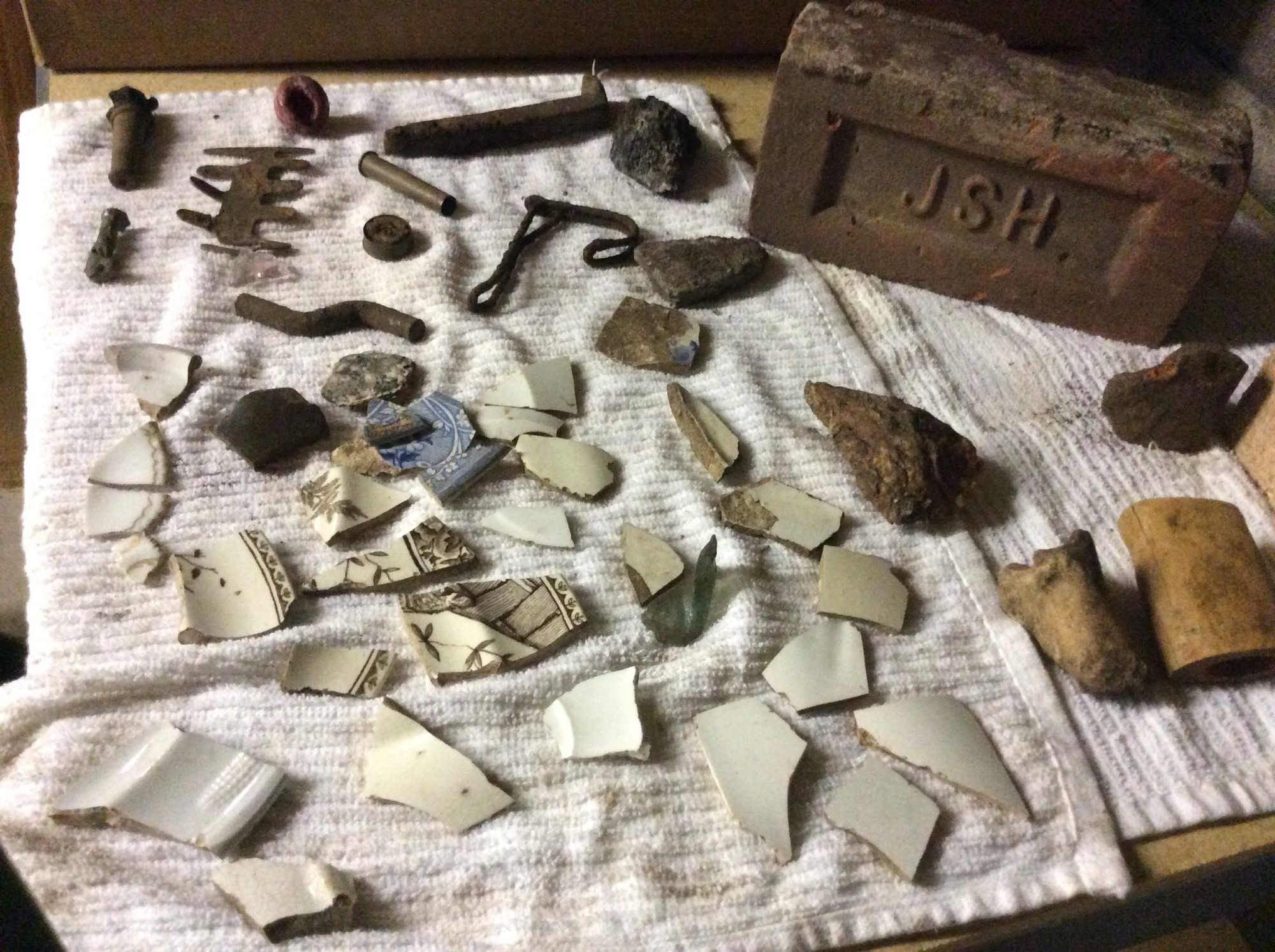DNR teams up with MTU archaeologists to restore and interpret historic range lighthouse site in Keweenaw County
Since the late 1950s, archaeological and restoration work has been performed on the grounds of the Copper Harbor lighthouse in Keweenaw County at Fort Wilkins Historic State Park.
The lighthouse is situated off Woodland Road at the end of a curling peninsula that juts into Lake Superior on the eastern end of the harbor.
Fort Wilkins is a restored 1844 Army military outpost. The roughly 700 acres the fort, campgrounds and other features are situated on became a state park in 1923. A great deal of initial park development and restoration work occurred after the Great Depression, under the Works Progress Administration.
Over the past couple of years, new finds and renovations are ongoing on the park’s range lights property, which sits beside Fanny Hooe Creek. These mainland range lights work in concert with the lighthouse on the point to guide vessels to Copper Harbor and then safely into it.
The work follows a study contracted in 2014 by the Michigan Department of Natural Resources Parks and Recreation Division, in cooperation with the Michigan History Center, and with the help of an archaeological survey conducted by Michigan Technological University at Houghton.
“The long-term goal of the range light property is to provide better access for park visitors. And, based upon historical, archaeological and documentary research, interpret the site around the building,” said Barry James, a Fort Wilkins historian.
The history
In the mid-19th century, one of the first two lighthouses built on Lake Superior was constructed near the tip of the Keweenaw Peninsula to help ships past a treacherous reef into the safe refuge of Copper Harbor.
That 65-foot whitewashed stone tower was erected in 1848, with the light put into operation the following spring. An unattached stone lighthouse keeper’s quarters also was built at the entrance to Copper Harbor.
However, battered by the wind, rain and snow of fierce Lake Superior storms, the lighthouse tower fared poorly and was replaced by a brick lighthouse less than two decades after its initial construction.
 The lighthouse beacon cast its beam a few miles across the waters of Lake Superior, but ultimately proved ineffective by itself in protecting ships from the reef as they tried to navigate the harbor’s narrow entry passage. The lighthouse beacon cast its beam a few miles across the waters of Lake Superior, but ultimately proved ineffective by itself in protecting ships from the reef as they tried to navigate the harbor’s narrow entry passage.
In the wake of notable shipwrecks at the reef, a set of range lights – which when lined up, guide mariners safely into the harbor – was proposed to provide greater safety.
At first, two temporary range lights were erected in 1860 at private expense. These two lights – with one set farther back and higher than the second located nearer the shoreline – were mounted on poles.
In 1865, a new permanent set of range lights was installed on the mainland. The lights sit about 450 feet apart and the rear light is located just north of U.S. 41. Three years later, a range light keeper’s quarters was built at the site. This new quarters also housed the rear range light.
The keeper’s quarters was in use by the Lighthouse Service until 1937 when the range light was electrified. After that, the buildings were leased to summering residents into the 1940s. State park staff then used the structures for seasonal housing.
In 1927, a white steel tower replaced the front range light, which had been constructed from wood. In 1964, a skeletal tower was erected for the rear range light.
A half-century after the Copper Harbor Light was built, modernization produced changes there, too.
In 1919, when a 4th order Fresnel lens, fueled by oil, was replaced with an acetylene lantern, there no longer was a need for a lighthouse keeper’s quarters at the tip of the peninsula. Only infrequent maintenance of the lighthouse beacon now was required and those duties were passed on to the range light keeper from the mainland.
During the 1930s, a skeletal tower was built between the lighthouse and the lake and the acetylene lantern – which has since been replaced with advancing electrical components – was moved to its top, likely to make the light more readily visible to ships farther offshore. has since been replaced with advancing electrical components – was moved to its top, likely to make the light more readily visible to ships farther offshore.
The report
The historic structures report the DNR contracted in 2014 included recommendations for buildings and grounds restoration and interpretation of the range lights historic site.
The report also contained a paint study that provided information about historic paint colors used on building interior and exterior surfaces.
“Based upon the paint study, and the examination of historic images and the lighthouse itself, park staff concluded the exterior of the range lighthouse was painted an off-white color,” James said. “Historic window shutters, which have been missing since the 1930s, will be reconstructed and put back on the building. They will be painted a pine green color, which is still visible on the original trim on the exterior window sills.”
A recommendation also was made in the report to have an archaeological survey completed.
The work
Features remaining today at the range lights property include the rear range lighthouse, built in 1868. The structure is 1.5 stories tall and has six rooms, including a rectangular lantern room that once housed the rear range light.
The most recent occupant was an assistant park manager, who used the quarters before his retirement.
“It’s sat vacant for 15 years,” said Wayne Burnett, park supervisor. “Future plans call for restoring the interior of the building and providing better access around the site. Most park visitors don’t realize the range lighthouse reservation is part of the park.”
Similar work was done at the Copper Harbor Lighthouse where the original keeper’s quarters built in 1848 now serves as the lighthouse museum. The museum has been restored to highlight life in the mid-1800s.
The 1866 lighthouse itself is also a museum and has been fashioned to depict the lives of keepers and their families during the early part of the 1900s.
So far, at the range lights, the outside of the keeper’s quarters is being renovated.
“We’ve got three sides pretty much done,” Burnett said.
The foundation and windows still need work. Meanwhile, the interior of the structure will need significant renovations.
Other features at the site include a steel tower (erected in 1937), the front range light tower (built in 1928), an intact sidewalk leading to the light (which dates back to 1908) and a barn (constructed around 1910).
The survey
In 2015, archaeologists from Michigan Tech completed the recommended survey of the range lights property.
“Their goal was to locate building sites (privy, washhouse and barn) that were no longer standing, but showed up in historic photographs,” James said. “The university’s investigation will guide our future interpretive efforts, including the reconstruction of those buildings. We’d like to restore the site to the way it looked during the early 1900s.”
The archaeologists' work to relocate buildings turned up several finds, including the discovery of the site of the first hotel in the Keweenaw Peninsula.
Historic maps from the 1840s showed a building near the location of the front range light.
“Archaeologists focused their attention on a flat area near the shoreline and while shovel testing located several artifacts from the 1840s period,” James said.
The hotel was called the “Astor House,” named after the John Jacob Astor, a schooner that ran ashore during a gale Sept. 21, 1844 – the first shipwreck on Lake Superior. The ship was named for the country’s first millionaire who profited greatly from the Great Lakes fur trade.
The Astor House was owned by a Mr. Childs and managed by a man named Francois who also served as the cook, waiter, chambermaid and clerk of the establishment.
Serving primarily as a storehouse, the Astor House was a simple structure made of pine logs measuring 24 feet by 16 feet. The building was 1.5 stories with a small lean-to serving as a kitchen and dining area.
“Guests would stay upstairs where they were given space to spread out a mat and a buffalo robe,” James said.
The Astor House also housed the first newspaper in the region. The Lake Superior News and Miners Journal, first published in 1846, was edited by John N. Ingersoll and published by Ezra D. Burr.
The newspaper continued to be published at Copper Harbor until 1848, when it was moved to Sault Ste. Marie from 1850 to 1855. Today, the periodical’s legacy continues published daily in Marquette as The Mining Journal.
The U.S. Coast Guard continues to maintain the range lights at Fort Wilkins Historic State Park as navigational aids to mariners seeking entry past the rugged underwater reef at Copper Harbor.
Find out more about Fort Wilkins Historic State Park. Get information on Copper Harbor Lighthouse Tours.
Catch upcoming stories by subscribing to free, weekly “Showcasing the DNR” articles. Check out previous Showcasing articles.
/Note to editors: Contact: Barry James, 906-475-7857 or John Pepin, 906-228-6561. Accompanying photos are available below for download and media use. Suggested captions follow. Credit: Michigan Department of Natural Resources.
Artifacts: Some of the artifacts found in 2015 while researchers were trenching at the Copper Harbor Range Lights site.
Barn: A recent photo shows the current condition of the barn situated on the Copper Harbor Range Lighthouse property.
Harbor: Picturesque Copper Harbor is shown viewed from Brockway Mountain. The Copper Harbor Lighthouse is visible at the right on the tip of the peninsula.
Map: A map graphic shows Copper Harbor and the locations of the Copper Harbor Lighthouse and the associated range lights on the mainland.
Range Lighthouse: The 1868 Copper Harbor Range Lighthouse is shown prior to the start of restoration efforts, which are ongoing.
Station: A historic photo shows the Copper Harbor Range Light station with the adjacent Fanny Hooe Creek.
Additional photos: Barry James and Wayne Burnett./
The Michigan Department of Natural Resources is committed to the conservation, protection, management, use and enjoyment of the state’s natural and cultural resources for current and future generations. For more information, go to www.michigan.gov/dnr.
|


 The lighthouse beacon cast its beam a few miles across the waters of Lake Superior, but ultimately proved ineffective by itself in protecting ships from the reef as they tried to navigate the harbor’s narrow entry passage.
The lighthouse beacon cast its beam a few miles across the waters of Lake Superior, but ultimately proved ineffective by itself in protecting ships from the reef as they tried to navigate the harbor’s narrow entry passage. has since been replaced with advancing electrical components – was moved to its top, likely to make the light more readily visible to ships farther offshore.
has since been replaced with advancing electrical components – was moved to its top, likely to make the light more readily visible to ships farther offshore.






